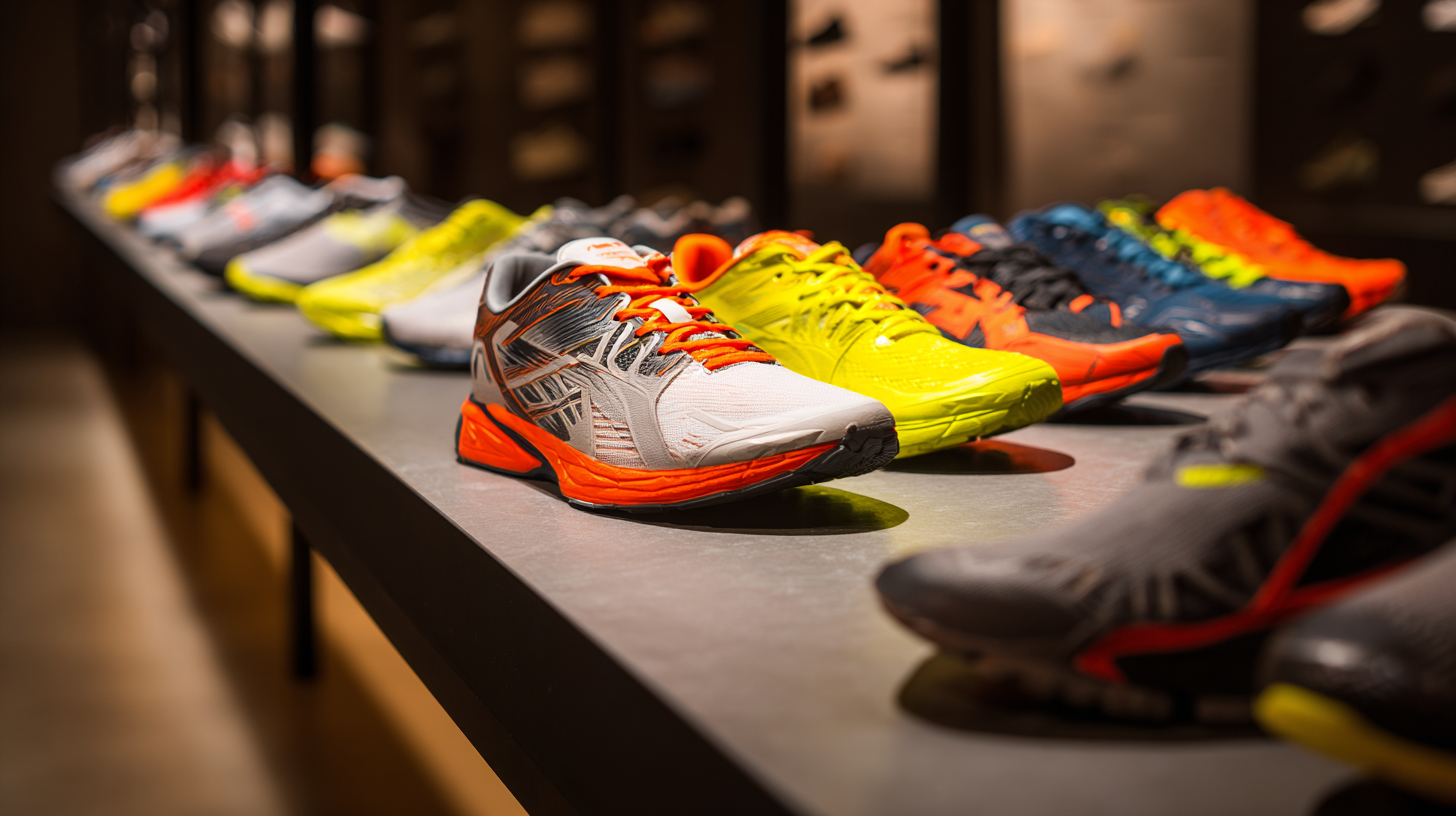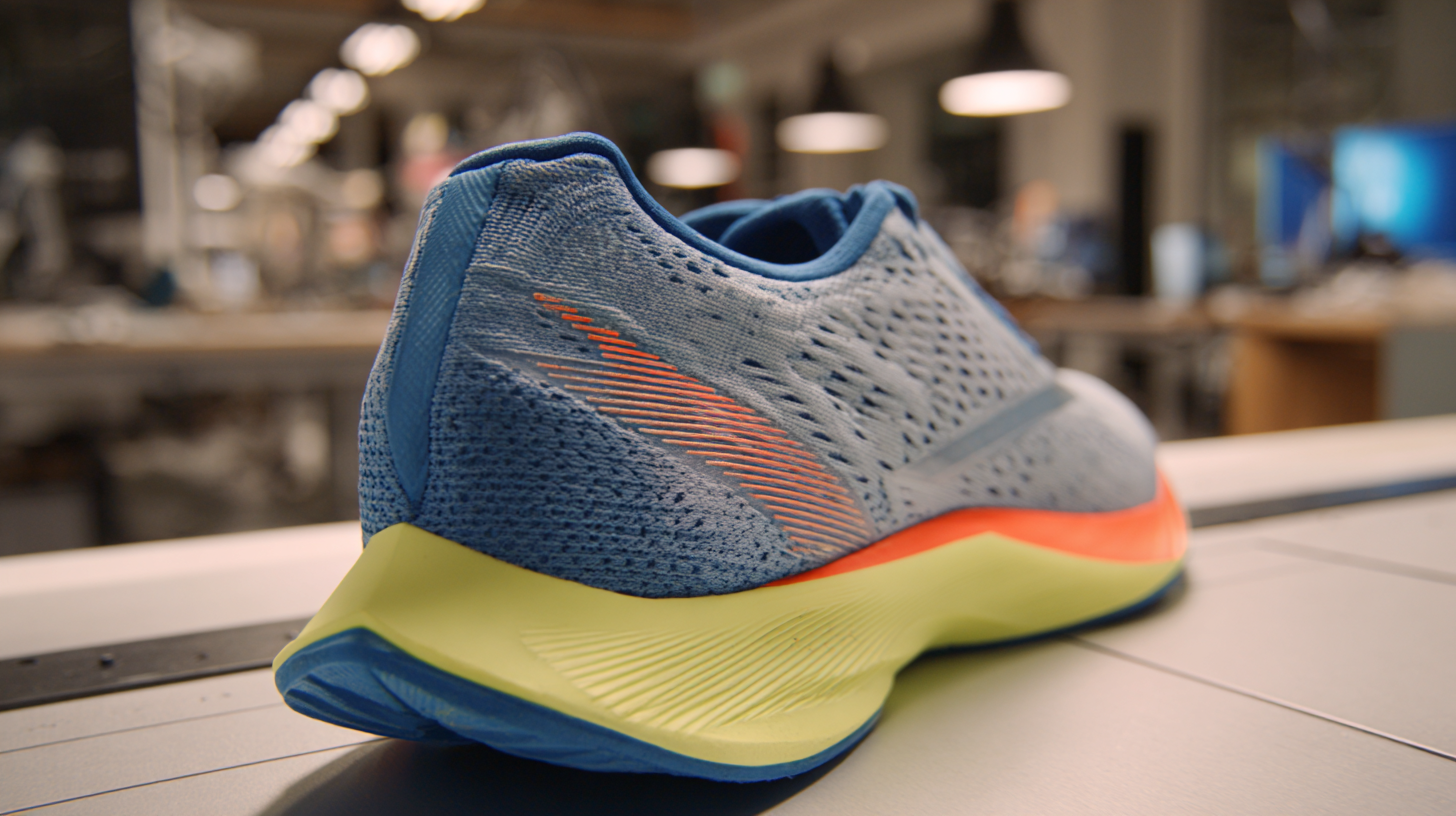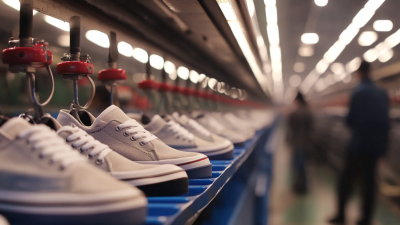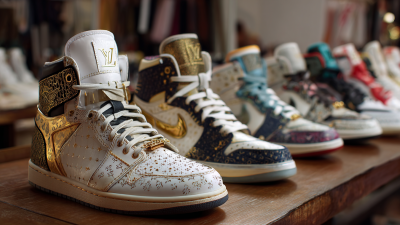
The rise of Korean athletic footwear manufacturers has reshaped the global market, driven by innovative technologies and a focus on performance enhancement. In 2022, the global athletic footwear market was valued at approximately $84.4 billion and is projected to grow at a CAGR of 4.5% from 2023 to 2030, according to a market research report by Grand View Research. This growth underscores a burgeoning demand for high-performance footwear that not only meets aesthetic appeal but also integrates advanced features such as lightweight materials and improved shock absorption. Korean manufacturers have been at the forefront of this trend, investing heavily in R&D and leveraging cutting-edge materials.
 For instance, their use of responsive cushioning and breathable fabrics has been pivotal in attracting athletes and fitness enthusiasts alike. Understanding the science behind these innovations not only highlights their impact on performance but also positions Korean brands as key players in the dynamically evolving athletic footwear industry.
For instance, their use of responsive cushioning and breathable fabrics has been pivotal in attracting athletes and fitness enthusiasts alike. Understanding the science behind these innovations not only highlights their impact on performance but also positions Korean brands as key players in the dynamically evolving athletic footwear industry.
The evolution of Korean athletic footwear has been marked by a series of innovations that reflect both cultural changes and advancements in technology. From the early days of simple canvas shoes, Korea’s footwear industry has transformed significantly, driven by a desire to enhance athletic performance and comfort.
Notable brands began investing in research and development, utilizing cutting-edge materials and design principles that cater specifically to the needs of athletes. This relentless pursuit of excellence has placed Korean athletic footwear on the global stage, recognized not only for performance but also for style.
Tip: When choosing athletic footwear,
consider the specific sport you engage in. Different activities require different support and cushioning levels. For instance, running shoes prioritize shock absorption, while cross-training shoes offer versatility for various workouts.
As the history of Korean athletic footwear unfolds, it reveals a narrative of innovation intertwined with tradition. Each new generation of footwear incorporates feedback from athletes, ensuring that performance-enhancing features meet the evolving demands of sports. This commitment to continuous improvement underscores the importance of collaboration between manufacturers and users, resulting in a product that
not only reflects technical prowess but also resonates with the lifestyle of active individuals.
Tip: Always try on athletic shoes later in the day, as
feet tend to swell, ensuring the best fit and comfort during your activities.
Korean athletic footwear has gained significant attention for its innovative approach and data-driven performance metrics. Recent reports from the Footwear Technology Institute reveal that advancements such as lightweight materials and enhanced cushioning systems can reduce impact forces by up to 30%, significantly benefiting runners' performance and reducing injury risks. Brands are increasingly utilizing 3D printing technologies, allowing for personalized shoe designs that cater specifically to individual biomechanics. These innovations not only enhance comfort but also optimize energy return, making Korean running shoes a preferred choice for professional and amateur athletes alike.
Tips for selecting the right pair include understanding your running style and foot type. Look for shoes that provide adequate arch support tailored to your foot's natural structure. Consider the latest metrics provided by brands, as many now offer data analytics tools to track performance indicators such as pace, distance, and foot strike pattern. This data can help you make informed choices that align with your fitness goals. Ensuring a proper fit with additional space in the toe box can also improve overall comfort during longer runs, allowing for enhanced performance and decreased fatigue.
This chart illustrates the performance metrics of various advanced technologies implemented in Korean running shoes. Each bar represents the percentage improvement in performance across different metrics such as cushioning, stability, breathability, and weight reduction.
 Korean athletic footwear has gained a reputation for its exceptional durability and comfort, largely thanks to advanced material science. Brands in South Korea invest heavily in research and development to create innovative materials that enhance performance while ensuring a snug fit. Techniques like knit construction and the use of lightweight, breathable fabrics allow for flexibility and support during intense workouts, making these shoes ideal for athletes and casual users alike.
Korean athletic footwear has gained a reputation for its exceptional durability and comfort, largely thanks to advanced material science. Brands in South Korea invest heavily in research and development to create innovative materials that enhance performance while ensuring a snug fit. Techniques like knit construction and the use of lightweight, breathable fabrics allow for flexibility and support during intense workouts, making these shoes ideal for athletes and casual users alike.
When choosing the right pair of athletic shoes, consider the materials used in their construction. Look for options that incorporate moisture-wicking technology to keep your feet dry, as well as cushioning materials that absorb impact and reduce fatigue. Additionally, opt for shoes with a supportive midsole to enhance stability during your workouts.
Tip: To prolong the lifespan of your athletic footwear, store them in a cool, dry place and avoid exposing them to direct sunlight for extended periods. This simple step can prevent material degradation and maintain their performance features for longer.
The intersection of biomechanics and athletic footwear is increasingly shaping the future of performance sports. Recent advancements in technology have led to the creation of technologically advanced running shoes (TARS), specifically designed to minimize biomechanical factors associated with running-related injuries. Research indicates that these innovations not only enhance runner safety but also improve overall performance by optimizing the gait cycle. This is particularly prominent in Korean footwear research, where the integration of biomechanical principles is helping athletes achieve their best while reducing injury risks.
One of the most exciting developments is the analysis of various 3D printed biomimetic midsole structures, which can significantly impact gait phase and ratio. This approach allows manufacturers to tailor footwear to individual biomechanics, providing a personalized fit that enhances comfort and efficiency during athletic activities. As consumer demand grows and competitive pressures mount, the sports industry continues to witness an influx of patent innovations aimed at enhancing sporting performance through cutting-edge technology. Such breakthroughs not only highlight the scientific underpinnings of athletic footwear but also underscore the commitment to advancing athlete welfare through intelligent design.

Korean footwear design is increasingly focused on sustainability, seamlessly integrating environmental responsibility into innovative production processes. Companies are prioritizing eco-friendly materials—such as recycled fabrics and biodegradable rubber—to reduce their carbon footprint while delivering high-performance athletic shoes. This shift not only helps in mitigating the environmental impact but also appeals to a growing market of environmentally conscious consumers who seek products that align with their values.
**Tips:** When looking for sustainable athletic footwear, consider brands that offer transparency about their materials and production methods. Research the life cycle of the products to ensure they prioritize eco-friendly practices, and look for certifications that validate their sustainability claims.
In addition to material choices, Korean designers are exploring advanced technologies that enhance product longevity. By focusing on durability, these innovations reduce waste and promote a circular economy, where shoes are built to last and can be recycled at the end of their life cycle. This approach not only conserves resources but also challenges the fast fashion mentality prevalent in the footwear market.
**Tips:** Aim to invest in versatile footwear that can adapt to various activities, minimizing the need for multiple pairs. Look for shoes with a repairable design that allows for easy maintenance, prolonging their use and further supporting sustainable practices.
| Model | Material | Weight (g) | Breathability | Sustainability Rating | Price (USD) |
|---|---|---|---|---|---|
| Model A | Recycled Polyester | 250 | High | 4.5/5 | 120 |
| Model B | Bio-based Foam | 230 | Medium | 4.0/5 | 150 |
| Model C | Natural Rubber | 270 | High | 4.8/5 | 130 |
| Model D | Recycled Rubber | 260 | Medium | 4.2/5 | 140 |






